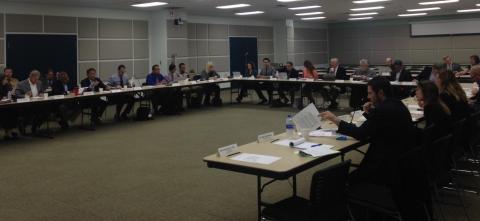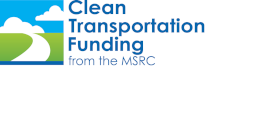
On October 23, the MSRC and the MSRC-Technical Advisory Committee (TAC) held a joint Retreat to set the stage for the development of the 2018-2020 Work Program. The goals of the Retreat were to focus on lessons learned from past MSRC programs, highlight opportunities for partnerships at the local and state level, and discuss ways to make MSRC’s programs as impactful and cost effective as possible in order to continue to reduce emissions from motor vehicles.
Larry McCallon, Chair of the MSRC, began the Retreat by welcoming everyone and noting that the upcoming Work Program will have the largest pot of funding available in MSRC history, at approximately $46.5 million. MSRC-TAC Chair Dan York outlined the day’s agenda and explained how examining lessons learned and a better understanding of how other state and regional agencies are making investments in clean transportation will help the TAC develop Work Program funding categories for the MSRC’s consideration.
South Coast Air Quality Management District Deputy Executive Officer Matt Miyasato expounded on the collaboration between the air district and the MSRC. He said the work the agencies are doing to improve air quality is really about protecting and improving public health. He suggested that primary areas of collaboration in the next two years could be deploying the needed resources to increase the number of zero and near-zero emission vehicles, expanding the infrastructure needed to support these vehicles in the medium- and heavy-duty categories, and prioritizing policies such as implementation of local low NOx solutions as well as leveraging AB 617 funding to develop fixes for local air quality problems.
Tim Olson, Energy and Fuels Program Manager for the California Energy Commission (CEC) and MSRC-TAC Member, presented an overview of the CEC’s investments in alternative transportation fuels and technology. In addition to investments in electric vehicles and charging stations and hydrogen infrastructure, he said that the CEC’s funding for advanced freight and fleet technologies in the Alternative and Renewable Fuel and Vehicle Technology Program matches up with the MSRC’s goals and objectives.
Jack Kitowski, Chief of the Mobile Source Control Division of the California Air Resources Board (ARB) and MSRC Member, provided information about the ARB’s mobile source incentive programs. He explained that ARB’s statewide goal is to have zero emission vehicles deployed where feasible, and near-zero emission vehicles everywhere else in order to achieve California’s long term and community level air quality and climate goals. He emphasized that the flexibility of the MSRC’s funding is critical because it can fund projects that other pots of money, like those from ARB and CEC, can’t because of restrictions placed on that money.
A case study of the importance of MSRC partnerships was presented by representatives from the Southern California Association of Governments (SCAG), with their Go Human Campaign and Future Communities Pilot Program. Go Human is a series of day-long community events with demonstration projects to support more local biking and walking. The Future Communities Program is designed to test technology and data-driven approaches to reducing vehicle miles traveled and GHG emissions by identifying strategies to quantity and monitor performance and efficacy. SCAG staff concluded that these partnership programs can give us the biggest bang for the buck.
Finally, MSRC’s Technical Advisor Ray Gorski provided an in-depth analysis of lessons learned from past MSRC funded programs by offering quantitative results of previous Work Program investments. He postulated that the success of any program depends upon how the MSRC designs, funds and implements the program, and recommended that these elements be considered when developing future programs.
At its November meeting, the MSRC-TAC had already began contemplating the key points discussed during the Retreat and is considering ways to best structure its Work Program development subcommittees that will construct new, and refine existing, project categories. New solicitations likely will be available in early 2019.
